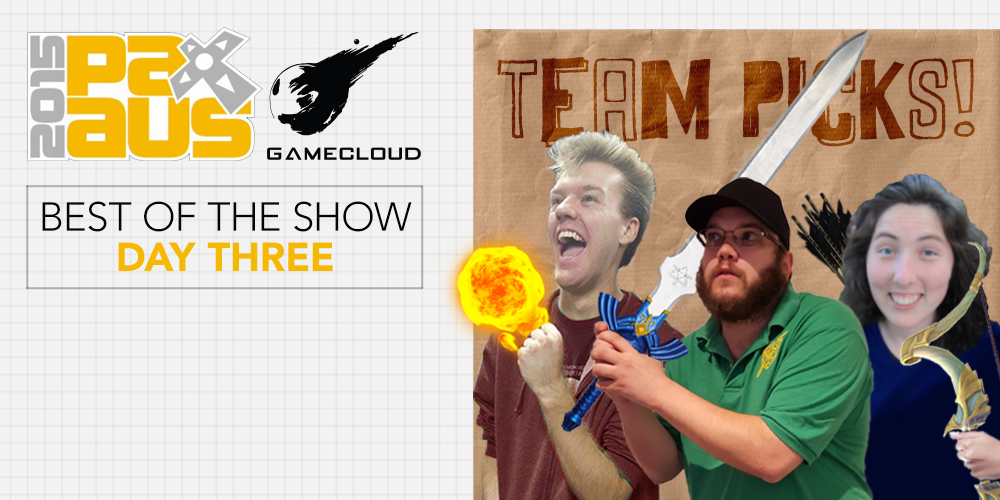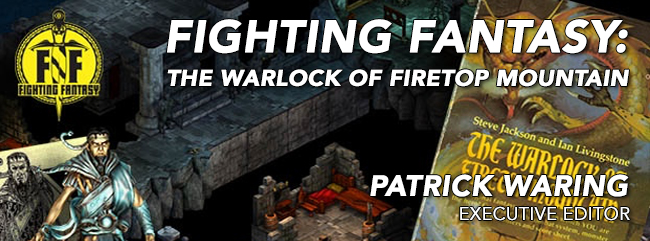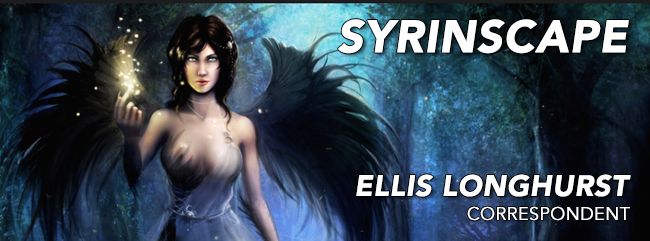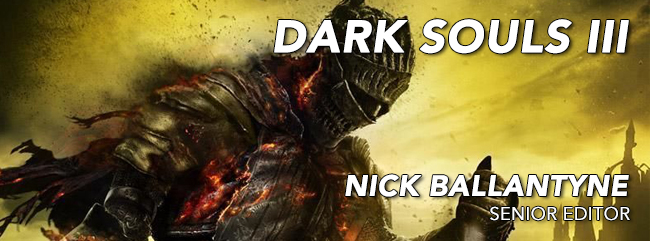
The sun is setting on PAXAus 2015 and it’s been an amazing few days according to our intrepid reporters – Paddy, Nick and Ellis. They’re presenting the last of the shiniest of shinies and prettiest of baubles that they’ve uncovered from across the convention floors. It’s been so crazy that their final entries simply couldn’t be contained in a single article. Once you’re done perusing their thought babblings about what they most enjoyed from today’s event, feel free to mosey on over to their Final Thoughts. Just don’t mention the game that starts with B and sounds like Flabbleyorn, or Paddy will never shut the hell up.

You walk into the Expo Hall, the sights and sounds of merriment greet you. Directly in front of you is the Battleborn play area, its alluring combat beckoning you toward it. To your right is something different, a shiny, vinyl banner bearing a familiar name that makes you quiver with an overwhelming sense of nostalgia: The Warlock of Firetop Mountain. What do you do?
>Seriously, Paddy, cut it out and look at something else that isn’t Battleborn.
Approaching the small indie booth, you’re greeted by a friendly, smiling developer who hands you a leaflet about their various works. Glancing over the sheet in your hands, several high profile titles jump out at your attention – not the least of which is SMBC’s Trial of the Clone. Your interest piqued, you turn to the screens that rest on the desk beside you and there you see your prize. A videogame version of The Warlock of Firetop Mountain, beautifully crafted to appear as a virtual tabletop game. It even has miniatures that “hop” to move, simulating the way a person might count out the number of spaces they’re crossing.
>Sweet Jesus, they even have the Steam controller for people to try out.
You pick up the controller, and it feels unnervingly comfortable in your hands like the GCN controller had asexually reproduced to create an über-controller. Making decisions about where to go and what to do, the text boxes suddenly give way to a depiction of the original artwork from the book and your heart melts. At that moment, two Drunken Orcs appear and you’re shown a tactical, turn-based combat system that has replaced the dice rolling from the book. A cheering crowd of con-goers gathers around you as the battle is drawn out with the surprisingly wily Orcs (who’re meant to be drunk.)
Blows are traded, screens are cursed at, and both Orc and Mage are locked in furious combat, but finally you stand victorious and claim your prize. A small ornate box sits on the Orcs’ table, which you gingerly lift and open with great anticipation. Inside is a coiled up snake, which immediately lunges at your throat and finishes the Orcs’ work for them. Your character is dead, dingus.
>Holy shit it really is just like the book. Take my money! TAKE IT!

Movies have soundtracks. Television shows have soundtracks. Video games have soundtracks. Why can’t tabletop and role-playing games have soundtracks too? That’s more or less the train of thought that led accomplished composer and dedicated tabletop role-player Benjamin Loomes to create an application providing themed audio accompaniment called Syrinscape. “Syrinscape is the app that brings the movie soundtrack of your tabletop game to life,” Loomes says.
I was initially skeptical about this app – specifically regarding the quality and diversity of the music and sound effects, as well as its practical application for role-playing games. However, with five years of prototyping and community feedback behind it, the current version of Syrinscape (available now for PC, Mac, Android, and iOS) ticks all the right boxes.
“It produces dripping spooky sewers, beautiful Elven forests, tavern brawls, pirate battles – all the sounds you associate with the fantasy or sci-fi world. And those sounds can be created in just two touches,” Loomes explains. Audio quality and diversity of sounds were two aspects that Loomes especially wanted to get right, as he was aware that issues with these aspects could detract from the player experience. “Syrinscape takes, for example, twenty different wolf howls, thirty different car passing sounds, thirty different hawkers and they are all separated, dynamically timed and scattered.”
From my perspective, tabletop role-playing games are largely about imagination and creativity, so how does this game interact with those elements? “Immersion is the key. Syrinscape envelopes players in an atmosphere that is undesirable and irresistible. Audio has an incredible ability to cue involuntary emotional responses. For example, the sounds of a great big beast roaring is going to trigger a fight or flight response, while the sound of a rat gnawing at wood in the background can create a sense of anxiety. Syrinscape captures the players in the moment and deepens the sense of experience.”
Unlike visually presented stimuli, which forces players to view a character or setting in a certain way, audio can be individually interpreted, so the creative and imaginative elements are still at play. What’s more, it’s not only the dungeon master who can utilise the music sets and sound effects (made simple through the accessible interface and pre-made interludes so as not to conflict with other duties.) Players can download the app to their phones and play sound effects whenever they feel – anything from a thunder crash when casting a spell, to vocal reactions or disappointed brass sounds.
Other bonuses include not needing an Internet connection to use the sound sets once downloaded, and the first two sound sets are free. Furthermore, a sound set creator will be made public in December so players can create their own sound sets using the same system as Benjamin Loomes. This is a must-try for all tabletop role players and anyone looking to add a little fantasy or sci-fi audio accompaniment to their daily commute to work. I’ll certainly be playing the ‘Battle Begins’ theme when I hop on my bike to battle Sydney traffic every morning.

You know what? When a formula works, it works, and holy balls, Dark Souls 3 is taking the best formulas to make some kind of super formula. It’s the ubermensch of its genre, the Gaussian corollary of logical progression; it’s just more Dark Souls, but it’s also so much more. It feels somewhere between Bloodborne and the old Dark Souls flavour we know and love, however, it’s unquestionably a Souls game.
The speed of the game has definitely hastened, but it’s by no means fast. The feeling of weight and predictability of attacks is still intact, but now you don’t take an epoch to swing a sword. The enemies have lifted their game too, but not just in terms of speed. The variety of enemies I saw, from dickbag necromancers to giant axe circlers, kept me on my feet in the short demo I played. Then, of course, I died.
Souls games have always rewarded being careful and punished being an arrogant cock. The guy next to me was, indeed, that arrogant cock, and while I only died at the end, his playthrough was somewhat more… Problematic. The challenge is very much intact, and every fight has tension to it, but – as with all Souls games – being smart is more important than being twitchy, contrary to my neighbour’s opinion. Of course, this is true of all the Souls games, and that’s the damn point.
You see that 3 in the title? Yeah, this is a game made for the fans, and they’re nailing what I want to see from it. It’s more of the same, but it’s all been iterated on for maximum Souls-ness. It’s still brutal, it’s still punishing, and it’s still so satisfying to beat that one guy (you know the one) after the tension ran high for so long. I can safely say that what I played was what I wanted to see, and what I saw was Soulsy goodness.













